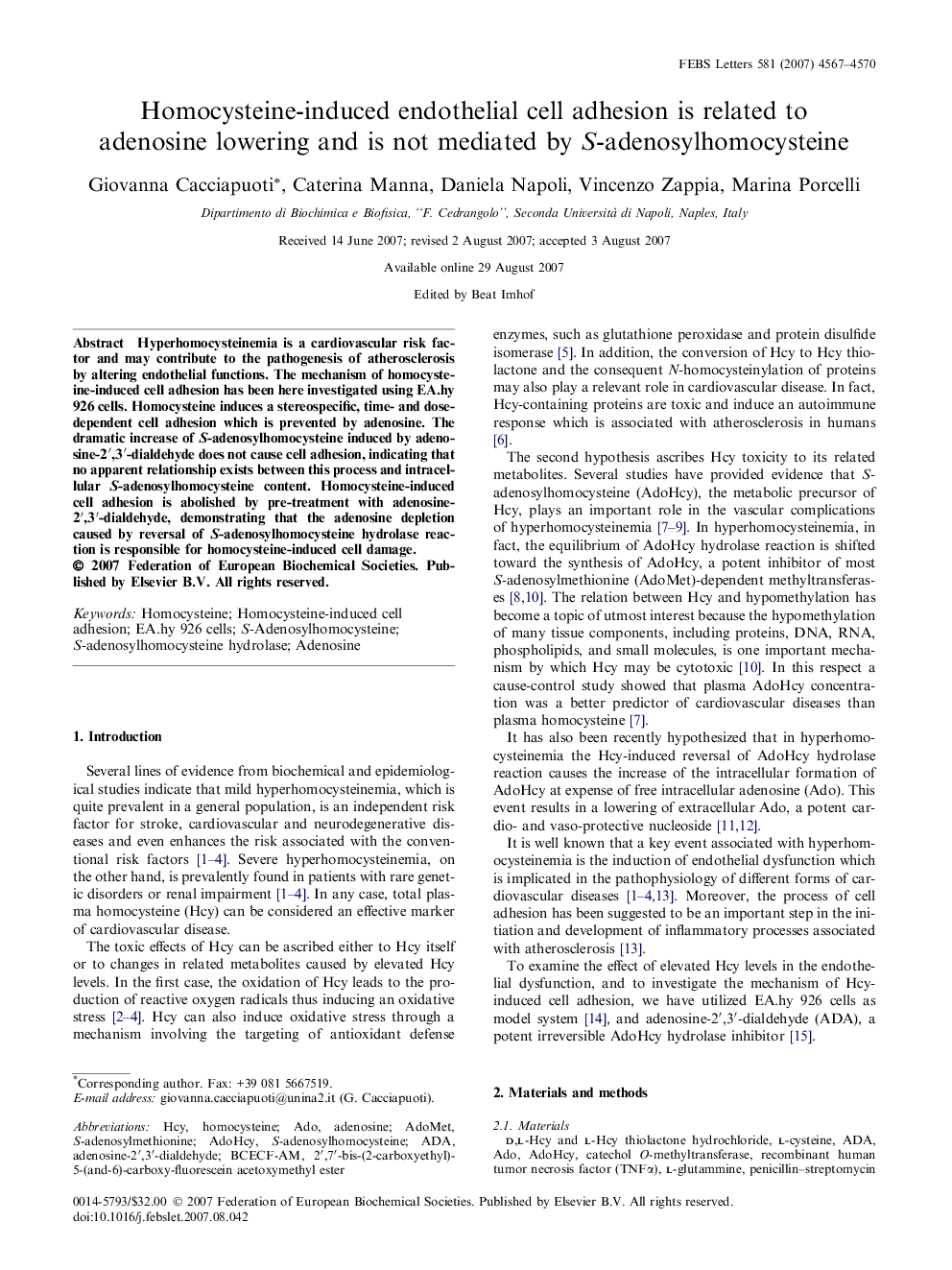| Article ID | Journal | Published Year | Pages | File Type |
|---|---|---|---|---|
| 2049553 | FEBS Letters | 2007 | 4 Pages |
Hyperhomocysteinemia is a cardiovascular risk factor and may contribute to the pathogenesis of atherosclerosis by altering endothelial functions. The mechanism of homocysteine-induced cell adhesion has been here investigated using EA.hy 926 cells. Homocysteine induces a stereospecific, time- and dose-dependent cell adhesion which is prevented by adenosine. The dramatic increase of S-adenosylhomocysteine induced by adenosine-2′,3′-dialdehyde does not cause cell adhesion, indicating that no apparent relationship exists between this process and intracellular S-adenosylhomocysteine content. Homocysteine-induced cell adhesion is abolished by pre-treatment with adenosine-2′,3′-dialdehyde, demonstrating that the adenosine depletion caused by reversal of S-adenosylhomocysteine hydrolase reaction is responsible for homocysteine-induced cell damage.
